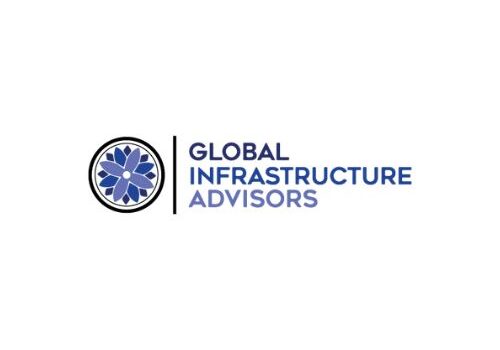 Finance
Finance
The Role of Project Finance in Advancing Renewable Energy Solutions
- by giadvisors
The U.S. renewable energy sector is on the verge of a significant transformation, with project finance resourcing this growth. As the world transitions toward cleaner and more sustainable power sources, projects including solar, wind, and hydroelectric energy have become essential for our collective future.
By 2025, renewables are projected to surpass coal as the country’s leading source of electricity, largely due to increasing investments and supportive policies (U.S. Energy Information Administration [EIA], 2023).
The EIA anticipates that renewable capacity will expand by 36 gigawatts (GW) by 2030, propelled by initiatives such as the $27 billion Greenhouse Gas Reduction Fund established under the Inflation Reduction Act (IRA).
However, these projects typically require substantial capital investments—often presenting considerable challenges. Renewable developments are frequently associated with long timelines and unpredictable market conditions, which can introduce significant risks (IRENA, 2022).
Project Finance: Capital for Long-Term Large-Scale Projects
Project finance represents a specialized funding approach used for large-scale infrastructure initiatives, particularly renewable energy projects. This model involves raising capital based on the project’s future revenue streams rather than the developer’s balance sheet. This structure enables financial institutions to evaluate the project’s potential success as an independent entity when making investment decisions.
In fact, approximately 50% of recent renewable energy project debt has been sourced from foreign banks and financial institutions, highlighting the role of structured financing in managing risks and ensuring that these projects remain viable (World Bank, 2023).
The demand for clean energy continues experiencing unprecedented growth. In 2024 alone, corporate buyers signed Power Purchase Agreements (PPAs) totaling 16,403 MW, reflecting the urgent need to scale up renewable energy production (BloombergNEF, 2024).
6 Benefits of Project Finance for Renewable Energy Growth
1. Smart Financial Structuring
Project finance is a key strategy for renewable energy developers. It focuses on securing limited recourse capital for large projects through optimal combinations of debt and equity.
By structuring investments strategically, developers can maximize capital efficiency while controlling risk exposure. This focused approach enables the creation of more sophisticated and sustainable projects.
Instead of tying investments to corporate balance sheets, project finance makes it possible to fund initiatives that might otherwise appear too risky. According to industry analysis, this approach fueled approximately 50% of all renewable energy investments in 2023, demonstrating its important role in advancing clean energy development.
2. Risk Management
Understanding risk is fundamental in the renewable energy industry. Projects face numerous potential challenges, including technological changes, regulatory shifts, and market fluctuations. Effective risk management is essential for project viability.
Project finance provides a significant advantage by distributing risk between developers and lenders, reducing the likelihood of project failure. Research by the International Renewable Energy Agency (IRENA) indicates that projects utilizing this financing model demonstrate significantly better outcomes. With structured risk management strategies, risk exposure can decrease by as much as 30%.
3. Feasibility Assessment
Comprehensive feasibility assessments are crucial for any renewable energy project. These evaluations determine whether a project is technically possible, financially viable, and operationally sustainable, preventing unexpected costs. Key components include:
- Site Conditions: Evaluation of location suitability
- Technology Selection: Assessment of appropriate technical solutions
- Regulatory Compliance: Verification of alignment with local regulations and standards
- Financial Modeling: Analysis of economic viability and returns
Research demonstrates that projects with detailed feasibility studies are 20% more likely to secure funding. These assessments provide clear visibility into risks and opportunities, allowing developers to address challenges proactively and enhance project fundability.
4. Long-Term Cash Flow Stability
One of the primary advantages of project finance is its capacity to deliver long-term cash flow stability for renewable energy projects. This stability is achieved through structured financing arrangements that typically feature extended repayment periods, which are crucial for the financial health of these projects (Steffen, 2018).
These extended terms allow projects to manage debt over a longer period, particularly valuable during early operational stages when revenue growth may still be developing.
With positive cash flow secured through structured financing, developers can effectively cover operational costs, fund maintenance, and pursue expansion plans. This financial predictability attracts investors seeking stable, reliable returns. According to Arutiunian (2024), the ability to forecast cash flows accurately is a statistically significant factor in attracting investment to renewable energy projects.
5. Tax Incentives
Understanding and leveraging tax incentives is essential for enhancing the financial viability of renewable energy projects. In project finance, maximizing available tax benefits, such as the Investment Tax Credit (ITC), represents a standard optimization strategy.
These incentives can significantly improve project economics, with estimates indicating they could enhance returns by as much as 30%. Strategic utilization of these incentives can substantially improve the overall financial outlook for renewable energy developments.
6. Support For Emerging Markets
Project finance serves as a enabler for large-scale renewable energy projects in emerging markets, where local financing options often prove insufficient. This mechanism facilitates access to foreign investment, which is essential for developing renewable infrastructure in these regions.
The renewable energy market in emerging economies is projected to grow by over 25% annually until 2030. Project finance will be instrumental in ensuring this growth materializes and that these regions can achieve their energy transition objectives.
Global Investment in Clean Energy
Global investment in clean energy reached $2 trillion in 2024, with $500 billion allocated specifically to solar PV technologies. This growth demonstrates how structured financing accelerates the transition to sustainable energy solutions.
The U.S. added 38.4 GW of solar capacity and 6.5 GW of wind capacity, reflecting a continued upward trend driven by supportive policies and accessible financing mechanisms.
Investments in cleantech manufacturing reached a record $71 billion in Q3 2024, while investments in clean technologies—such as $135 billion allocated globally for clean energy supply chains in 2023—continue to drive innovation and economic growth.
China led global clean energy investments with $675 billion in 2023, followed by Europe at $370 billion and the U.S. at $315 billion, highlighting the international scale of renewable energy development.
Sustainable Growth Through Expert Guidance
The future of renewable energy depends on large-scale projects capable of generating clean, sustainable power. Project finance represents an essential tool for making these projects viable. By reducing financial risk, encouraging investment, and supporting innovation, project finance plays a fundamental role in advancing renewable energy solutions.
Global Infrastructure Advisors (GIA) provides expert project finance solutions for renewable energy developments, specializing in guiding clients through the complexities of financing large infrastructure projects. Their comprehensive services include feasibility studies, financial modeling, and transaction advice, streamlining the financing process for renewable energy initiatives.
Sustainable infrastructure will remain a critical priority through 2025 and beyond. With appropriate financing strategies, renewable energy projects can achieve both financial and environmental objectives while driving the global transition to clean energy.
Contact Information
Get in touch with our team at info@gi-advisors.com
Follow us on LinkedIn to receive regular updates on how to develop large-scale infrastructure successfully.
References
- Arutiunian, S. S. (2024). The theoretical aspects of financial management of the implementation of renewable energy projects in transport. Business Inform.
- BloombergNEF. (2024). Corporate clean power buying grew 12% to new record in 2023 according to BloombergNEF.
- International Renewable Energy Agency (IRENA). (2022). Renewable energy finance: A guide for policymakers.
- Steffen, B. (2018). The importance of project finance for renewable energy projects. Energy Economics, 69, 280-294. doi:10.1016/j.eneco.2017.12.001
- U.S. Energy Information Administration (EIA). (2023). Today in Energy: Renewable energy expected to surpass coal as the top source of electricity.
- World Bank. (2023). Financing renewable energy: A global perspective.
- IEA. (2023). Investment in clean energy this year is set to be twice the amount going to fossil fuels.









